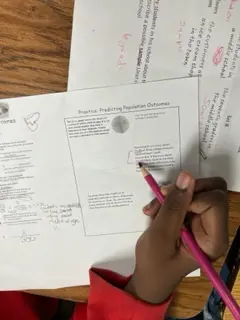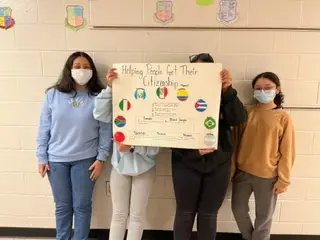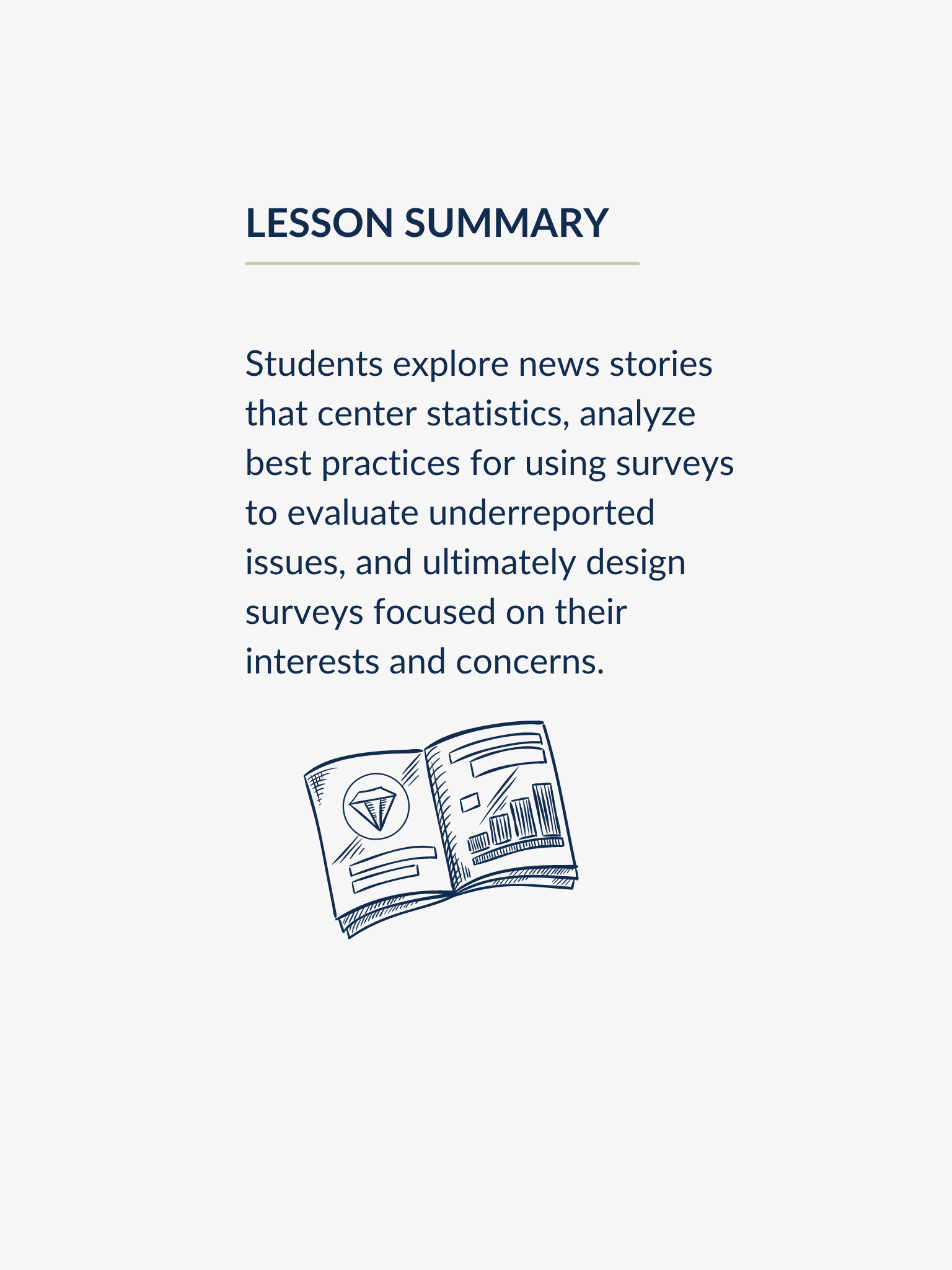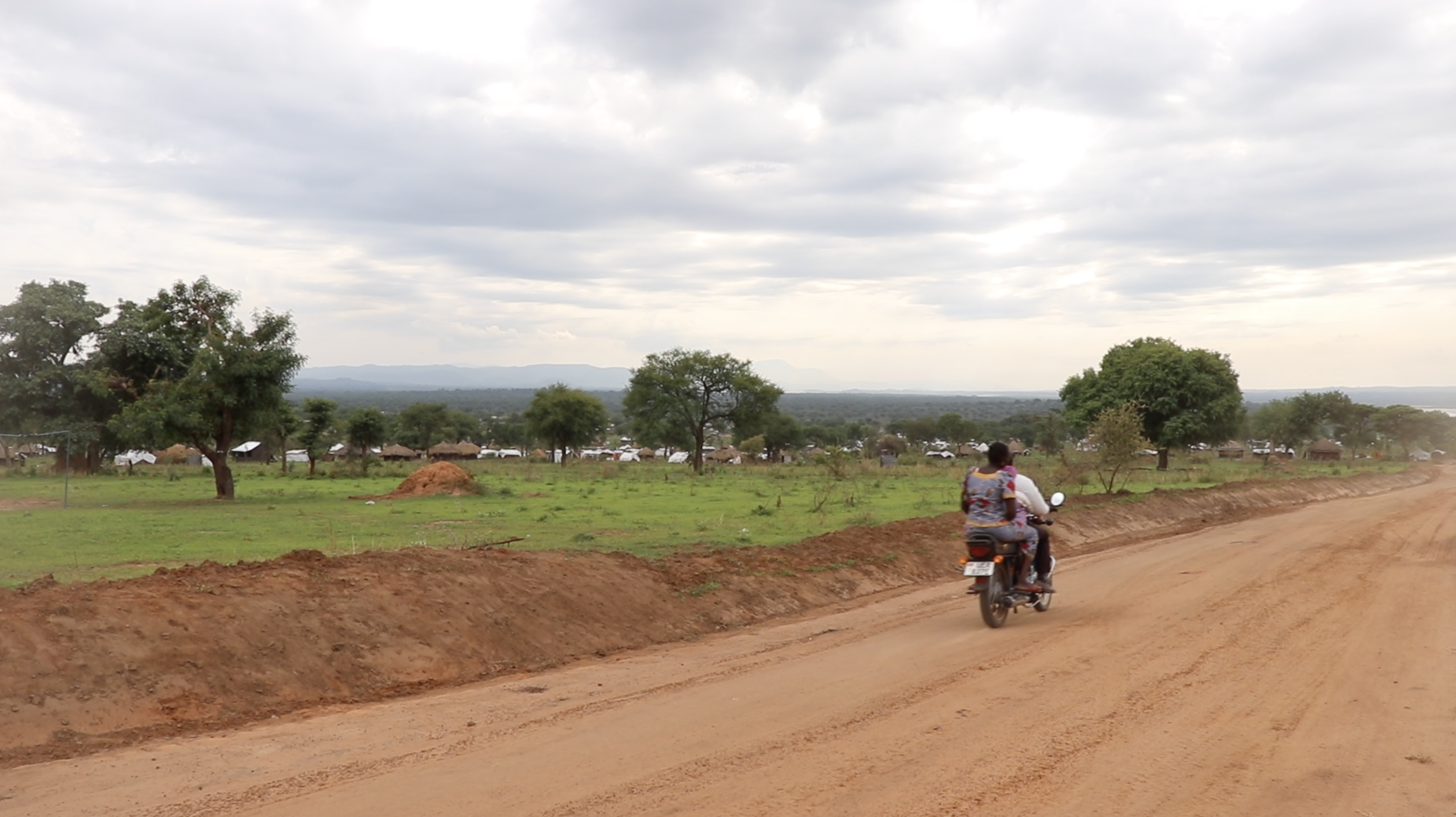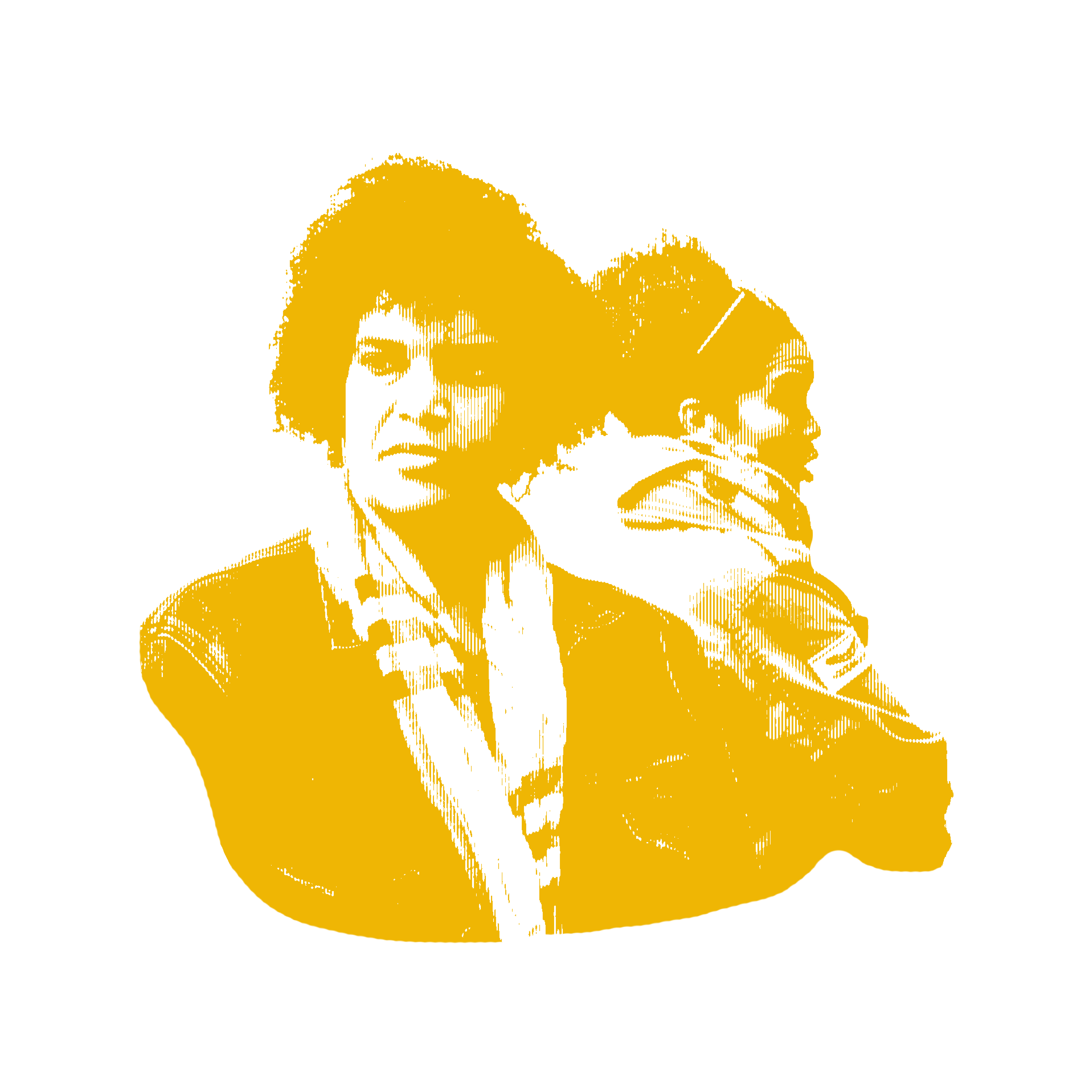This unit was created by Bethany Bryant, a middle school math teacher in Lawrenceville, GA, as part of the 2021-2022 Pulitzer Center Teacher Fellowship program. It is designed for facilitation across five 55-minute class periods, with work outside of class.
For more units created by Pulitzer Center Teacher Fellows in this cohort, click here.
Objectives:
Students will be able to…
- Recognize sampling techniques such as convenience, random, systematic and voluntary.
- Understand that random samplings produce the most representative samples of a population and support valid inferences.
- Apply statistics to gain information about a population from a sample of the population, understanding that the information is only valid if the sample is representative of that population.
- Consider the following questions to evaluate whether or not a survey is biased:
- Is the survey voluntary? (Voluntary surveys usually get respondents who feel strongly about the topic only and are not representative of the entire population.)
- Does the survey exclude any group?
- Is the sample size appropriate?
- Use surveys to evaluate an underreported topic in their communities.
Unit Overview:
The pedagogical vision for this unit plan is that students will analyze how data can be manipulated depending on how the population was sampled in order to suggest certain results. Students will then be able to use data to advocate for themselves.
Students will start by examining samples of a population in order to analyze how statistics can be used to gain information about a population. By comparing and contrasting different examples of samples, they will recognize that rationalizations about a population from a sample are valid only if the sample is representative of that population. Specifically, students will recognize that random sampling tends to produce representative samples and support valid inferences. They will also be able to determine evidence of bias in surveys.
Students will then explore news stories that center statistics in order to communicate the underreported causes and impacts or pressing global issues. They will subsequently be able to create their own surveys that reflect their understanding of the concepts above and focus on their interests and concerns.
Performance Task:
In groups of four, students will plan a survey about an underreported topic in their communities. As they come up with their surveys, students consider how this survey will surface an important topic, center an underrepresented voice/story, challenge an injustice, or present a solution. Once they identify a topic, students design their survey by writing a short statement explaining why they want to conduct their survey, what they hope their survey will answer, and how they identified the questions and population for their survey. They will also determine how they want to present their survey (written form, digital form, poster, etc.)
Students write three-five questions that center what they want to learn while also eliminating any bias in the questions. They then create a data collection form, determine their sampling method, and create a plan for conducting their survey with a good representation of the population.
The main goal is to design the survey that can be executed. After being graded on their design, students can determine if you actually want to conduct their survey at a later date. As part of their process, students should use the rubric below to guide their planning. They can also decide to take on the following roles:
Wordsmith: This person develops the purpose of the survey and writes the questions (wording it without bias).
Data Analyst: This person determines the population and a valid sample, and decides what amount of students surveyed will be a good representation of the population you want to reach.
Logistics Manager: This person develops a realistic plan to get the sample and conduct the survey, also assists in overall design when needed.
Creative Director: This person will be in charge of arranging pictures, art, poetry, or music lyrics, or other creative expressions that will enhance the appeal of the purpose of the survey.
Five-day unit plan, including classroom activities, multimedia resources, instructions and practice quizzes for all math lessons, and performance tasks for the unit.
Unit Resources:
| Texts | >Reporting From Outside South Sudan: How a Phone Survey Helped Us Get to the Truth by Carolyn Thompson for Pulitzer Center >“First Antibody Surveys Draw Fire for Quality, Bias” by Gretchen Vogel for Science >“Who are Middle Schoolers Following on Instagram?” from Wellesley Centers for Women |
| Videos | What Are Underreported Stories? video from the Pulitzer Center |
| Teaching Materials | >Day 1 Cloze Notes: Inference notes on sample and population, adapted from materials by tothesquareinch.com [.pdf] [.docx] >Estimating Populations notes [.pdf] [.docx] >Optional Warm Up and Exit Ticket Resources [.pdf] [.docx] >Sample concept cartoon for Exit Ticket [.pdf] >Exit Ticket for Inferences Day 2 using quizizz.com >Additional scenarios from the article, “First Antibody Surveys Draw Fire for Quality, Bias” by Gretchen Vogel for Science [.pdf] [.docx] >Biased or Not Biased Samples using quizizz.com >Graphic organizer: Biased and Unbiased Samples, which includes examples from Glencoe 7th Grade Mathematics Volume 2 [.pdf] [.docx] >Journalist Visits to Classrooms | Pulitzer Center >Full Project Description and Rubric [.pdf] [.docx] >Optional Warm Up and Exit Ticket Resources [.pdf] [.docx] |
Common Core Standards:
MGSE7.SP.1 Understand that statistics can be used to gain information about a population by examining a sample of the population; generalizations about a population from a sample are valid only if the sample is representative of that population; understand that random sampling tends to produce representative samples and support valid inferences.
Formative Assessments:
Students engage with daily exit tickets and create lumio videos to demonstrate learning throughout the unit. See the full unit plan on the "Facilitation Resources" tab for exit ticket examples. Click here for links to example quizzes in the Quizziz platform.
Summative Assessment:
Students ultimately create surveys that reflect their understanding of the unit concepts and focus on their interests and concerns. The following presentations and surveys were created by middle school students in Lawrenceville, GA who participated in this unit in spring 2022.
